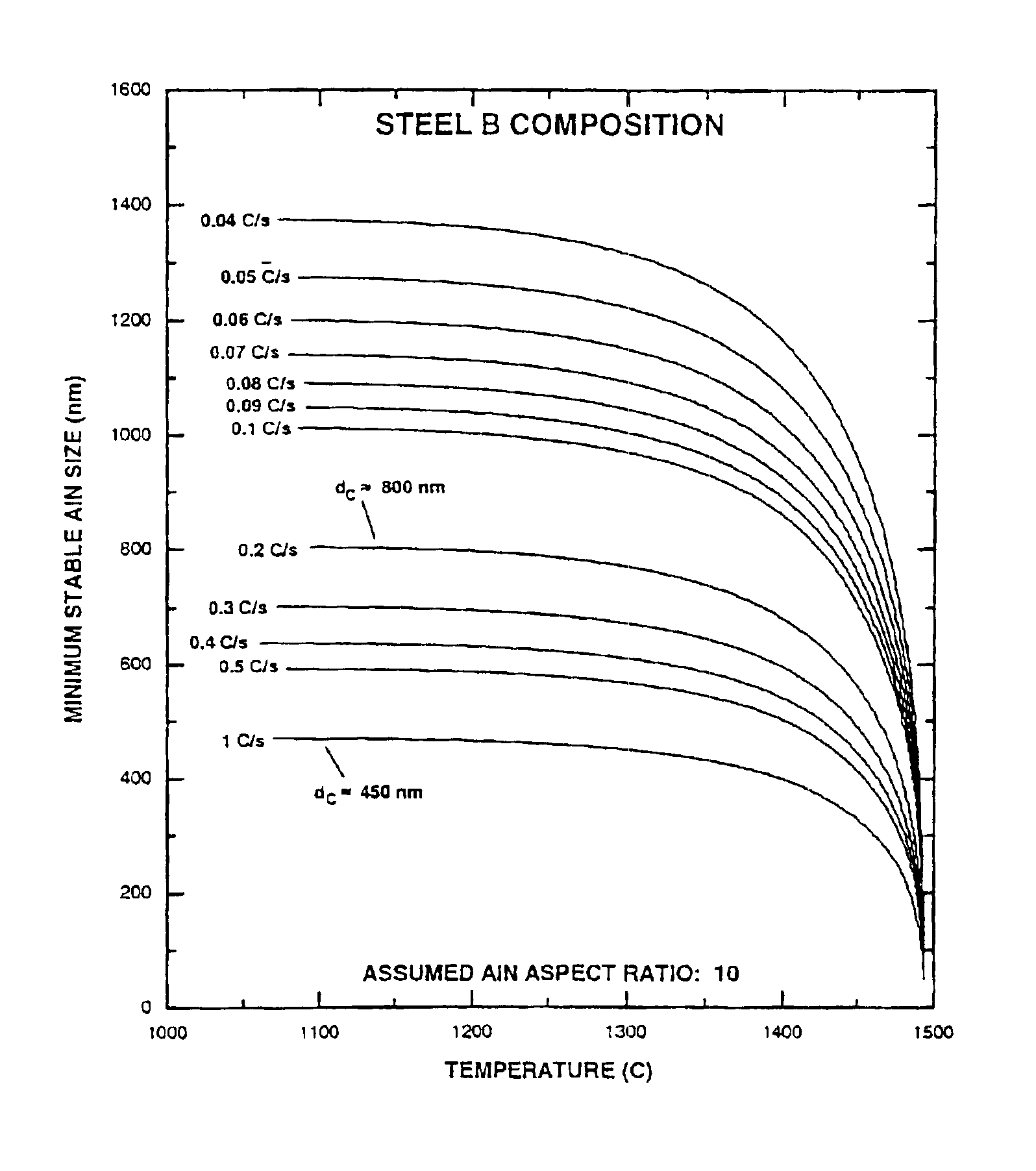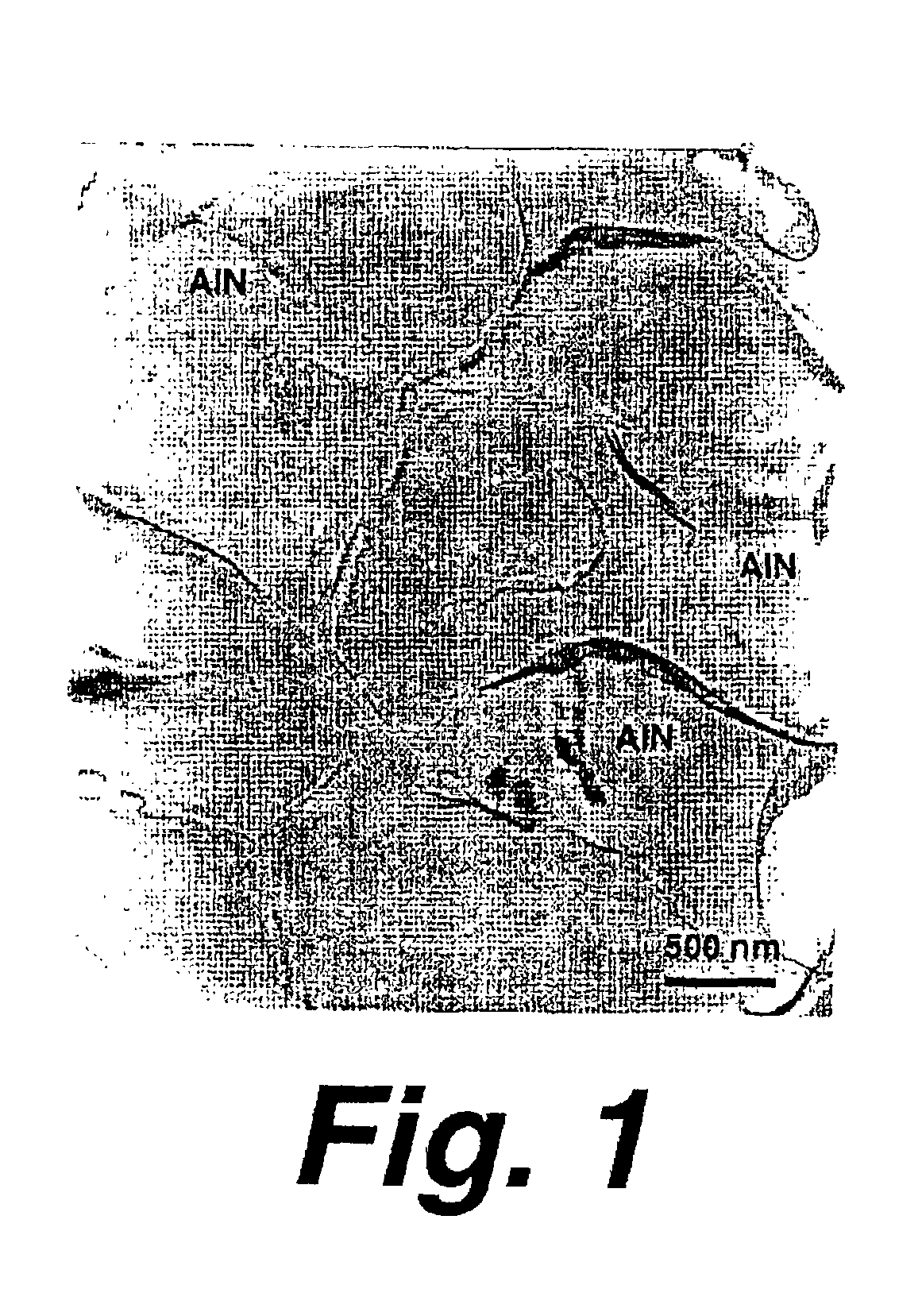Method of improving the toughness of low-carbon, high-strength steels
a high-strength steel and low-carbon technology, applied in the field of improving the toughness of low-carbon, high-strength steels, can solve the problems of not being easily eliminated, degrading the toughness of tempered martensite, etc., to improve the toughness, improve the toughness, and reduce the size and content
- Summary
- Abstract
- Description
- Claims
- Application Information
AI Technical Summary
Benefits of technology
Problems solved by technology
Method used
Image
Examples
Embodiment Construction
The precipitation of AlN in the solute-enriched interdendritic liquid provides a necessary condition for the embrittlement phenomenon in low-carbon steels, through a sufficient condition for embrittlement requires the retention of coarse precipitates through post-solidification cooling. Methods of effectively controlling this phenomenon are limited to restricting the amount of AlN that precipitates during solidification and / or the amount of AlN that is retained through post-solidification cooling. Decreasing the rate of solidification in the columnar zone of a casting, for example, can minimize the microsegregation-induced precipitation of AlN, although methods to practically achieve this objective in a commercial environment can be somewhat cost intensive. Compositional modifications to limit the extent of AlN precipitation are also of limited utility. In particular, gettering a portion of the nitrogen with titanium, as shown in FIG. 3, is only predicted to have a second-order effe...
PUM
| Property | Measurement | Unit |
|---|---|---|
| temperature | aaaaa | aaaaa |
| equilibrium solution temperatures | aaaaa | aaaaa |
| equilibrium solution temperature | aaaaa | aaaaa |
Abstract
Description
Claims
Application Information
 Login to View More
Login to View More - R&D
- Intellectual Property
- Life Sciences
- Materials
- Tech Scout
- Unparalleled Data Quality
- Higher Quality Content
- 60% Fewer Hallucinations
Browse by: Latest US Patents, China's latest patents, Technical Efficacy Thesaurus, Application Domain, Technology Topic, Popular Technical Reports.
© 2025 PatSnap. All rights reserved.Legal|Privacy policy|Modern Slavery Act Transparency Statement|Sitemap|About US| Contact US: help@patsnap.com



